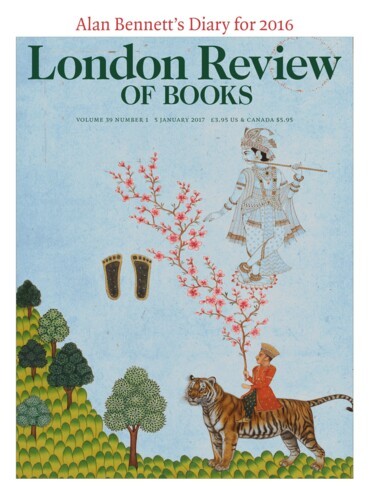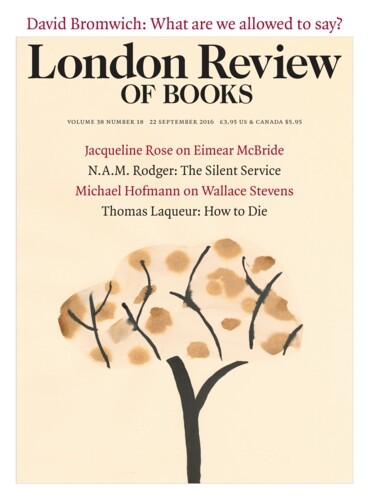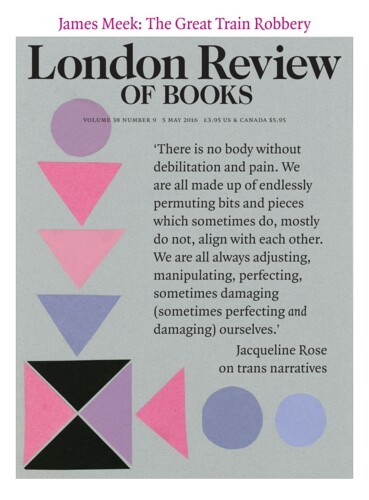Christmas Trees
Alice Spawls, 5 January 2017
At the carol concert in St Martin-in-the-Fields, two weeks before Christmas, shoppers and squawking babies filled the church’s elegant interior. It’s a sort of Christmas cake of a building, with dark panelling and white stucco icing, but the only hints of the season were the looping boughs of fir hung from the galleries. Outside, however, hundreds of men in Santa suits (who...





